Every spring, I look forward to my new spring arrivals, but I especially can’t wait for the first glimpse of my red-breasted grosbeak visitors. The males are the first to arrive in May, followed by the females a few weeks later. This year I have three males and two females coming to my feeders. They are quite a pleasure to observe. I find the females to be a lot more territorial at the feeders than the males. They are always chasing the males away and claiming the feeders for their own. Also, every year, I have at least one male out of the bunch, that will let me get just close enough to take photographs. I also find it amusing that when the males are at the feeders, they talk or sing softly while chewing. I find that even though they sometimes display territorial behavior, these birds also have a sweet nature about them.

Even better than watching these birds, I especially enjoy hearing their calls and songs. Other than the beautiful flute-like song of the wood thrush Hylocichla mustelina, the song of the rose-breasted grosbeak is my favorite bird song to hear during the spring and summer. Sometimes they really get going and their song gets really loud. It seems to overtake the songs of other species of birds in the yard. Even though these grosbeaks have quite a presence during the later part of spring they don’t often stay very long. I seem to observe fewer of them as spring turns into summer. This year, I’m hoping they stick around a little longer than years past because I will be sorry to see them go. At least I can look forward to their arrival again next year.
The following photographs are a collection that I have taken around the yard this month and I will also share a few interesting facts about the rose-breasted grosbeak Pheucticus ludovicianus.
Rose-breasted Grosbeak Size & Shape
Rose-breasted grosbeaks are stocky, medium-sized songbirds with very large triangular-shaped bills. They have broad chests, with short necks and a medium-length, square-shaped tail.
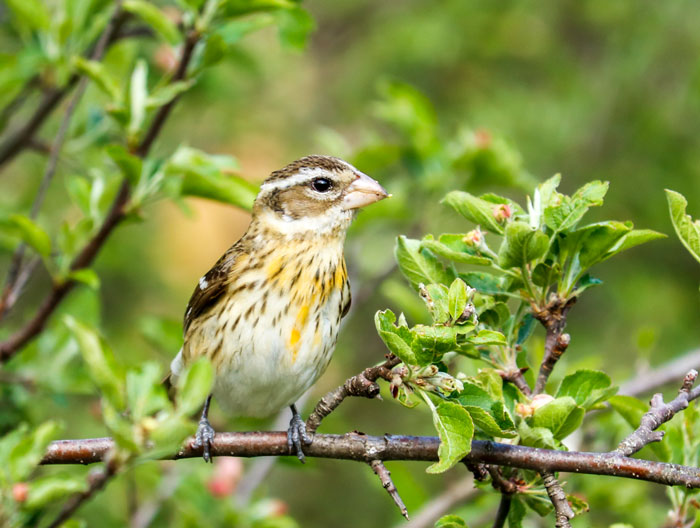
Rose-breasted Grosbeak Colors & Pattern

Adult males are black and white with a bright red triangle extending from a black throat down the middle of the breast. Females and immature rose-breasted grosbeaks are brown and heavily streaked, with a bold whitish-color stripe over the eye. Males flash pink-red under the wings, while in flight. Females flash a yellowish color. Both sexes show white patches on their wings and tail. At all stages of life in both sexes, the beak is a dusky horn color.
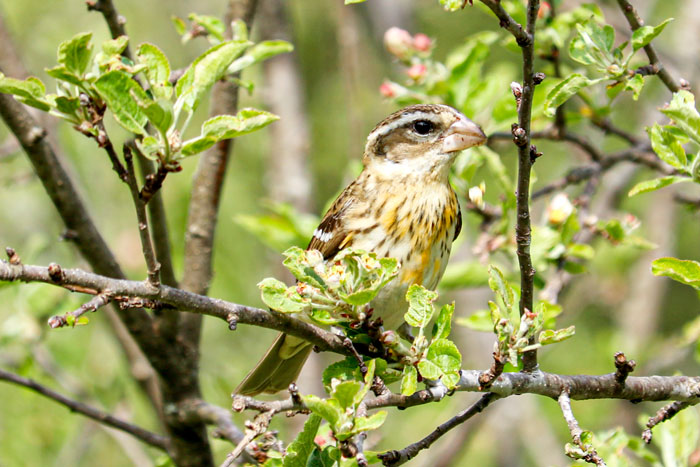
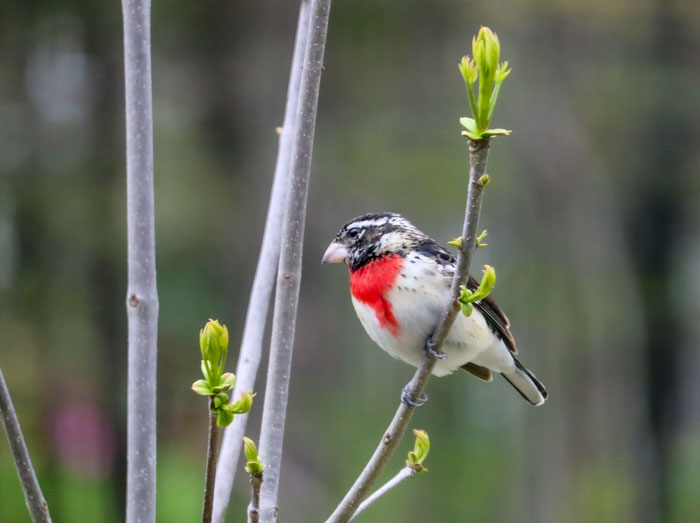
An immature male rose-breasted grosbeak developing his adult plumage.
Rose-breasted Grosbeak Habitat
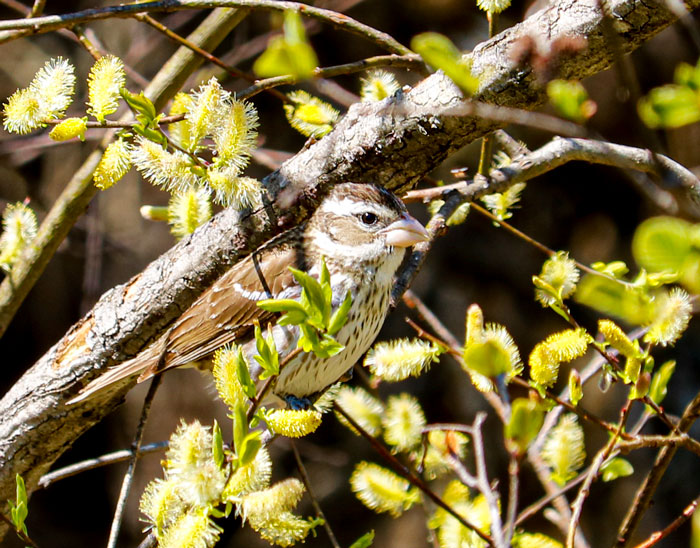
Rose-breasted grosbeaks breed in eastern woods. They can be found in both deciduous trees and conifers. These birds are most commonly found in regenerating woodlands, along the edges of woods, and in parks. During their migration, they will frequent fruiting trees to help fuel their flights to Central and South America.

Rose-breasted Grosbeak Feeding Behavior & Diet
Rose-breasted grosbeaks feed mostly on insects, seeds, and berries. About half of their yearly diets can consist of insects, including beetles, caterpillars, grasshoppers, true bugs, and others, as well as spiders and snails. They eat many seeds, this includes seeds from trees such as elms. These birds will also sometimes eat from buds and flowers. They may also heavily feed on fruits during the late summer into the fall. The young are mostly fed insects. Rose-breasted grosbeaks often visit bird feeders, where they eat sunflower seeds as well as safflower seeds, raw peanuts, and suet.
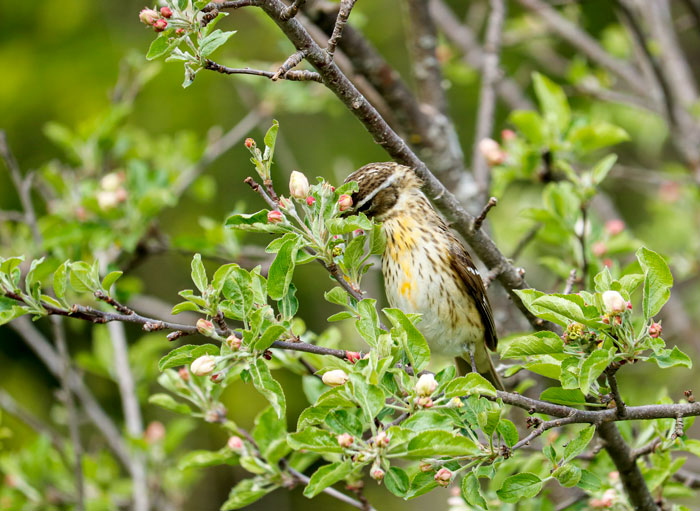
Rose-breasted Grosbeak Song & Calls
Both the males and females sing a rich, sweetly whistled song, composed of many notes that alternately rise and fall. This pattern of this song is similar to that of the American robin but mellower. Most birders describe the song of the grosbeak to be sweeter and have more melody than that of the robin. Songs can last six seconds and consist of twenty notes or syllables. Rose-breasted grosbeaks are one of few bird species reported to sing while sitting in the nest. The female sings while building the nest, incubating, and brooding. The males will often sing quietly from the nest and loudly from other high perches.
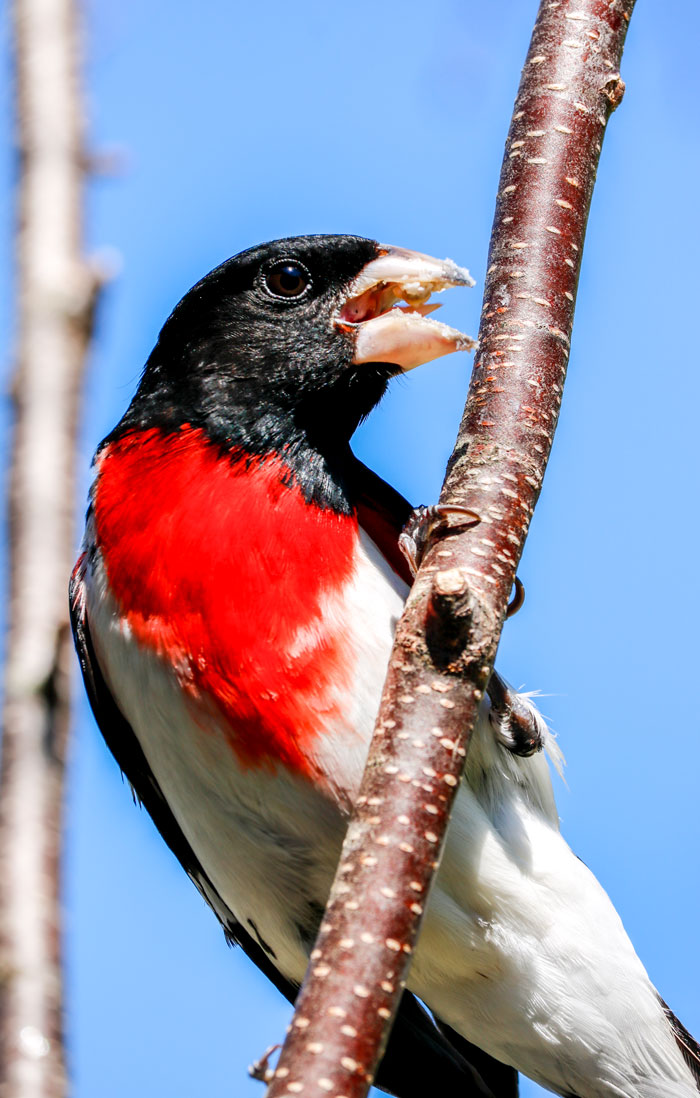
Rose-breasted grosbeaks give short, sharp, penetrating chink calls, sometimes compared to the sound of a sneaker on a gym floor. They also give harsh, repeated squawks when alarmed.
Rose-breasted Grosbeak Nesting
Male red-breasted grosbeaks will sing in order to defend nesting territory. They may also fight with intruding males. During courtship, males may partly spread wings and tails, draw their heads back, and approach females while singing.
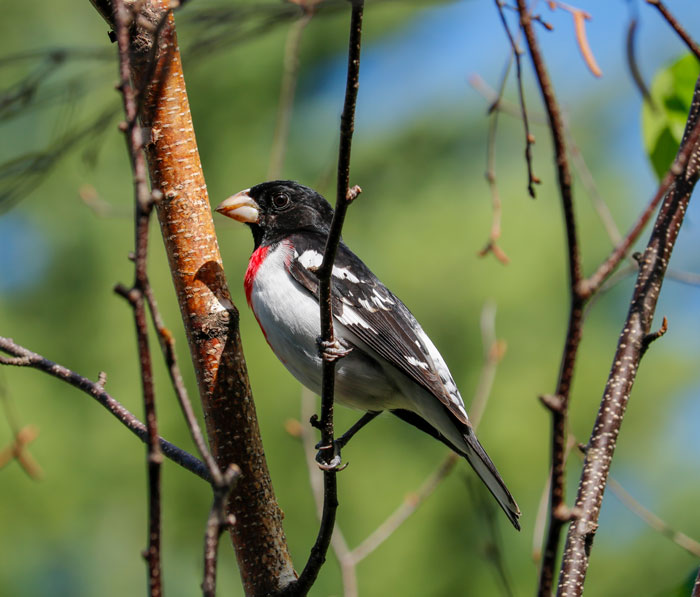
The nest is constructed in a deciduous tree or large shrub and sometimes in a conifer. It is located five to twenty feet above the ground and sometimes even higher. Nests are built mostly by the female. It consists of an open cup, built rather loosely and made of twigs, weeds, lined with finer twigs, rootlets, and sometimes animal hair. This loose and flimsy design may leave eggs visible through the nest below.
There are three to five, typically four pale greenish-blue colored eggs with reddish-brown markings. They are incubated by both parents for thirteen to fourteen days. Both parents feed the nestlings. Young leave the nest about nine to twelve days after hatching. They have one to two broods per year and the male will feed the fledglings, while the female builds a new nest.
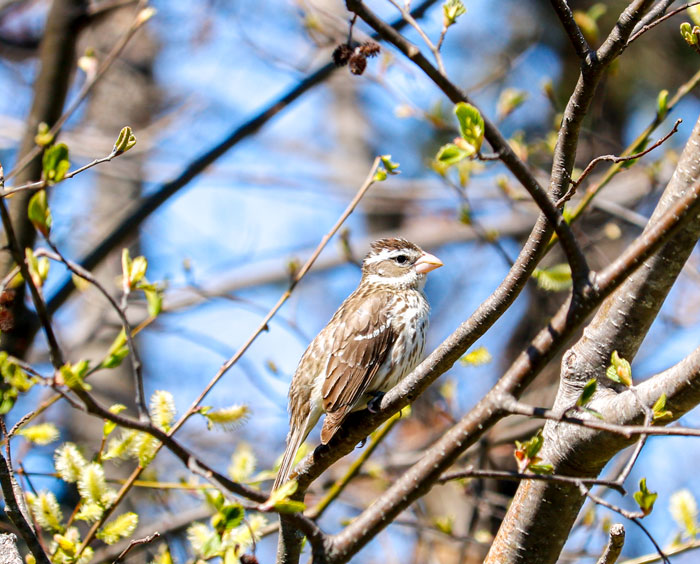
Rose-breasted Grosbeak Migration
The rose-breasted grosbeak is a long-distance migrant. They are the first birds to leave their breeding grounds as early as August. These birds migrate south in late September or October and return in late April or early May. Most of them fly from their North American breeding grounds to Central and northern South America. Most of them will fly across the Gulf of Mexico in a single night. While some will fly overland around the Gulf. Grosbeaks that winter in Panama and northern South America will tend to be from eastern parts of the breeding range, while those that winter in Mexico and Central America tend to be from western parts.
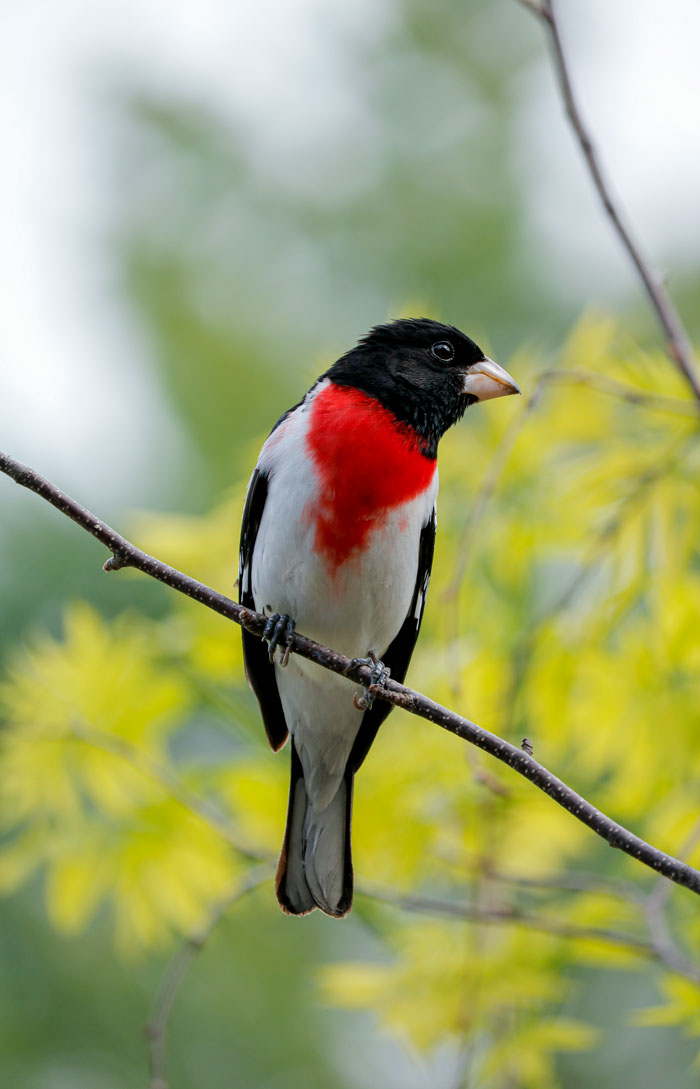
Thank you for reading and I hope you enjoyed learning about the rose-breasted grosbeak. If you have anything to share, such as your photographs and experiences with these beautiful birds, please feel free to leave a comment below. I would love to hear from you.
Resources used for this post:
allaboutbirds.org & audubon.org
I am in Miami, Florida. I have seen a female grosbeak, should I expect to see a male? How do I post a photo?
Hi, Steve,
How nice for you to have seen a female grosbeak. Now that these birds are migrating, it is indeed quite possible you may see a male as well.
Laura
PS – Here’s the photo you wanted to upload.
I started watching a Rose Breasted Grosbeak this spring because he came up to my bird feeder just about connected to my bedroom window. He was beautiful with that bright red chest against the black head. I now can recognize his mate also. What I didn’t know is that they are also a songbird. I don’t think I heard him sing yet. But I will listen for it since you alerted me to it. I found all the information you listed in this article so interesting that it makes me even more curious about this bird. Now I am going to hunt for their nest in all of the trees in my backyard. We have many trees and conifers plus bushes. Thank you so much for all your information. I am also interested in the Cardinal. I have male and female eating out of the same feeder by my window.
I’m so glad that you you’ve had the chance to view these beautiful birds, Sharon. I currently have five males and one female coming to my feeders. They are such a joy to watch. I’m glad that you found this information helpful and thank you so much for reading. I enjoy northern cardinals, too, and I will hopefully, post information about those as well. Stay tuned and happy birdwatching, Laura